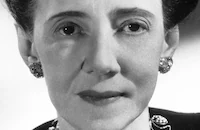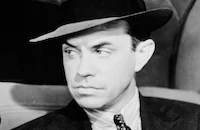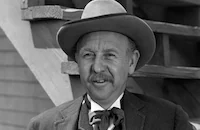Remember the Night

Brief Synopsis
Cast & Crew
Mitchell Leisen
Barbara Stanwyck
Fred Macmurray
Beulah Bondi
Elizabeth Patterson
Willard Robertson
Film Details
Technical Specs

Synopsis
Realizing that he is about to lose his case against Lee Leander, a beautiful shoplifter, assistant district attorney John Sargent foils long-winded defense attorney Francis X. O'Leary's argument to have the case decided quickly so that everyone can go Christmas shopping. Knowing that convictions, especially against a woman, are almost impossible during the holidays, he moves to adjourn the case until after the beginning of the year. Soon after, his conscience begins to bother him at the thought of Lee spending Christmas in jail, and he posts her bail. Lee is broke and has nowhere to go, though, and when Jack discovers that she is from Indiana, where he is about to drive to visit his mother for the holidays, he offers to drop her off at home. Enroute, they get disoriented on a country road and get arrested as trespassers, but Lee saves them from jail by starting a fire in the local Justice of the Peace's waste basket. When they finally make it to Lee's mother's farm, the hateful woman turns her own daughter away, hurting Lee who never could live up to her mother's moralistic code. Feeling sorry for Lee, Jack brings her home to his mother and Aunt Emma. Jack secretly tells his mother about Lee and she sympathizes with the girl, whom she recognizes as a victim of a loveless childhood. Aunt Emma, who doesn't know about Lee's background, enocurages a romance between her and Jack, and they soon fall in love. On New Year's Eve, before they are to return to New York City, Jack's mother, fearful that a relationship with Lee would destroy her son's career, pleads with her to give him up and Lee agrees. On the drive home, Jack offers to leave Lee in Canada so that she can avoid prosecution, but, mindful of his mother's plea, Lee insists upon returning to New York. The trial resumes and the judge, who has seen Jack and Lee together on the evening they left for Indiana, suspects that Jack might try to throw the case. Hoping to win sympathy for Lee, Jack begins to brow beat her in front of the jury, but Lee, realizing his motives, pleads guilty and is remanded to jail. As she is lead away, Jack proposes to her and she promises that if he still feels that way after she has paid her debt to society, she will marry him.

Director

Mitchell Leisen
Cast

Barbara Stanwyck

Fred Macmurray

Beulah Bondi

Elizabeth Patterson
Willard Robertson

Sterling Holloway
Charles Waldron

Paul Guilfoyle

Charlie Arnt

John Wray
Thomas W. Ross
Snowflake

Tom Kennedy
Georgia Caine
Virginia Brissac
Spencer Charters
George Melford

James Flavin
George Guhl
Kate Lawson
John Beck
Edmund Elfon

Fuzzy Knight
Ambrose Barker
Crew
Roland Anderson
Hans Dreier
A. E. Freudeman
James F. Hanley
Doane Harrison
Earl Hayman
Edith Head
Frederick Hollander
Carrie Jacobs-bond
William Lebaron
Mitchell Leisen
Ballard Macdonald
Walter Oberst
Leroy Prinz
Ralph Rainger
Leo Robin
Preston Sturges
Ted Tetzlaff
Hal Walker

Photo Collections
Videos
Movie Clip



Trailer
Hosted Intro




Film Details
Technical Specs

Articles
Remember the Night
Sturges's story revolves around an Assistant District Attorney (MacMurray) falling in love with the shoplifter he is prosecuting (Stanwyck). Feeling sorry that she will have to spend Christmas in jail awaiting trial, he bails her out and takes her to her childhood home in Indiana. But when he sees how cold and unwelcoming Stanwyck's mother is, he takes her to his own mother's home, also in Indiana, where Stanwyck is bowled over by the love and affection she encounters. Hanging over both their heads is the realization that they still have to return to the city to resolve the trial. Will MacMurray purposefully blow the case? Will she let him?
Sturges himself summarized his script this way: "Love reformed her and corrupted him." The finished movie, he said, "had quite a lot of schmaltz, a good dose of schmerz and just enough schmutz to make it box office."
Sturges's wife at the time, Louise, later recalled the period when her husband was writing this picture: "His work habits were brutal. He worked so hard at night that it was time to stop only when Gillette [his secretary] turned a gentle shade of green from hunger and exhaustion and started to fall off the chair. Preston could do this for days at a time, for although he was extremely lazy, he was also extremely ambitious and he knew that eventually he'd have to turn something out."
Directing a Sturges script for the second time (after Easy Living, 1937) was Mitchell Leisen, who trimmed many scenes throughout the screenplay before shooting and deleted a few more after shooting. This was something which generally irritated Sturges, and was the very reason he was determined to direct his own work - which he indeed began doing shortly after this production.
That said, Leisen was certainly talented and intelligent enough not to make the trims haphazardly. Leisen biographer David Chierichetti has written that Leisen adapted the script to the personas and abilities of his two stars: "Tailoring the script to fit the personalities of MacMurray and Stanwyck drastically changed Sturges's original concept of the characters. Reading the script, one gets the impression that it is the attorney who dominated the story. Sturges gave him many lengthy and clever speeches which made him assume almost heroic stature. Leisen felt that this was a bit theatrical, and the wordiness of the dialogue demanded a certain articulate quality on the part of the actor that MacMurray simply didn't have. Cutting MacMurray's lines down to the minimum, Leisen played up the feeling of gentle strength MacMurray could project so well. It was a far cry from Sturges's dashing hero."
Leisen brought Remember the Night in 8 days ahead of schedule and $50,000 under budget. He attributed this not to his script pruning but to Barbara Stanwyck's professionalism. "[She] was the greatest," he said. "She never blew one line through the whole picture. She set that kind of pace and everybody worked harder, trying to outdo her."
He continued, "Barbara had a bad back, and when we were shooting the barn dance sequence, the corset she had to wear under the old-fashioned dress was very painful for her. I'd say, 'Look, you've got two hours until your next scene, why don't you just take it off and relax?' and she'd say, 'Oh, no, you might need me,' and she sat on the set the whole time. She was always right at my elbow when I needed her. We never once had to wait for her to finish with the hairdresser or the make-up man."
Sturges hung out on the set and got to know Stanwyck. The actress later joked, "As long as you didn't open your mouth, but let him do the talking, everything was fine." The wheels were already turning in Sturges about working with Stanwyck again. She would recall: "One day he said to me, 'Someday I'm going to write a real screwball comedy for you.' Remember the Night was a delightful comedy, swell for me and Fred MacMurray, but hardly a screwball, and I replied that nobody would ever think of writing anything like that for me - a murderess, sure. But he said, 'You just wait.'" A year later Sturges was directing Stanwyck in The Lady Eve (1941), his first truly great writing-directing effort and one of the best movies on both their resumes.
Remember the Night opened in early January, 1940, and was well-received. Frank Nugent declared in The New York Times, "It is a memorable film, in title and in quality, blessed with an honest script, good direction and sound performances...a drama stated in the simplest human terms of comedy and sentiment, tenderness and generosity... warm, pleasant and unusually entertaining."
Stanwyck and MacMurray would team up on-screen three more times, for Double Indemnity (1944), The Moonlighter (1953) and There's Always Tomorrow (1956).
Producer: Mitchell Leisen, Albert Lewis
Director: Mitchell Leisen
Screenplay: Preston Sturges
Cinematography: Ted Tetzlaff
Film Editing: Doane Harrison
Art Direction: Roland Anderson, Hans Dreier
Music: Frederick Hollander
Cast: Barbara Stanwyck (Lee Leander), Fred MacMurray (John Sargent), Beulah Bondi (Mrs. Sargent), Elizabeth Patterson (Aunt Emma), Willard Robertson (Francis X. O'Leary), Sterling Holloway (Willie).
BW-94m.
by Jeremy Arnold
Sources:
David Chierichetti, Hollywood Director
Axel Madsen, Stanwyck

Remember the Night
Quotes
You threw a lighted match into the wastebasket?!- John Sargent
Well I wasn't aiming for the spittoon.- Lee Leander
You know that's called arson?- John Sargent
No! I thought that was when you bit somebody!- Lee Leander
Trivia
Notes
According to studio publicity contained in the production files at the AMPAS Library, this was the first time that director Mitchell Leisen did not appear as an extra in one of his films. This was the first film in which Barbara Stanwyck and Fred MacMurray worked together. Their only other joint screen appearance was in Double Indemnity, directed by Billy Wilder in 1944. Materials contained in the Preston Sturges Papers at the UCLA Library add that Sturges suggested the title Great Love for this film. This was Preston Sturges' last writing project before he became a writer-director. Modern sources add that Leisen shortened Sturges' script considerably.

Miscellaneous Notes
Released in United States 1940
Released in United States 1974
Released in United States June 1990
Shown at Sydney Film Festival June 8-22, 1990.
Released in United States 1974 (Shown at FILMEX: Los Angeles International Film Exposition (The Preston Sturges Movie Marathon) March 28 - April 9, 1974)
Released in United States 1940
Released in United States June 1990 (Shown at Sydney Film Festival June 8-22, 1990.)














